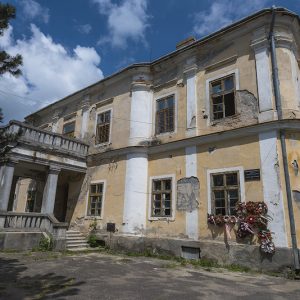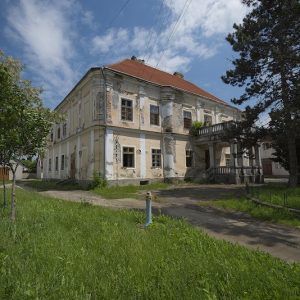- National Monument Number:
- SJ-II-a-B-05088
- Address:
- Nușfalău, Báró Bánffy János street 3.
- Dated to:
- Ownership:
- church property
One of Transylvania’s most affluent families, the Bánffy family, arrived in Nușfalău/Szilágynagyfalu in the 14th century. Soon after their settlement, they commissioned the construction of a castle and its outbuildings. The first documents that mention the castle originate from 1417.
In place of the castle once stood the Bánffy Zsigmond’s medieval mansion, built in renaissance style. The multi-storey classicist-baroque castle was built with the materials obtained from the aforementioned mansion, as well as with the stones obtained from the monastery of the Order of Saint Paul the First Hermit. The castle was fitted with four corner bastions and an entrance-gate at the south side. The outbuildings of the estate were constructed around the castle (the stable for the racehorses, the kitchen, the workshops, etc.)The castle’s park, modelled after the English landscape garden, was established towards the end of the 18th century. Trees of East-Asian origin were planted in the arboretum, which has since dwindled significantly.The “Bagolyvár” stood at its edge.
The Bánffy family’s one-storey mansion with arcades was built together with the outbuildings in the castle’s vicinity (which now belongs to the Protestant Church). On the south side of the rectangular courtyard once stood the granary, as well as the cellar below. The granary was transformed into a community centre after WW2. All the buildings bear stylistic features belonging to the baroque style. A moat was dug around the defensive walls of the castle. Traces of the moat can still be seen today. In 1936, Bánffy Albert sold the castle to the local protestant parish. From then on, the building housed a cultural centre and a cinema, and became a popular place among young people. After WW2, it functioned as a maternity hospital, accommodation for medical staff and a school for mentally disabled children. Bánffy Manor, built during the second half of the 19th century and bearing both classicist and baroque elements, was also part of the large courtyard.












